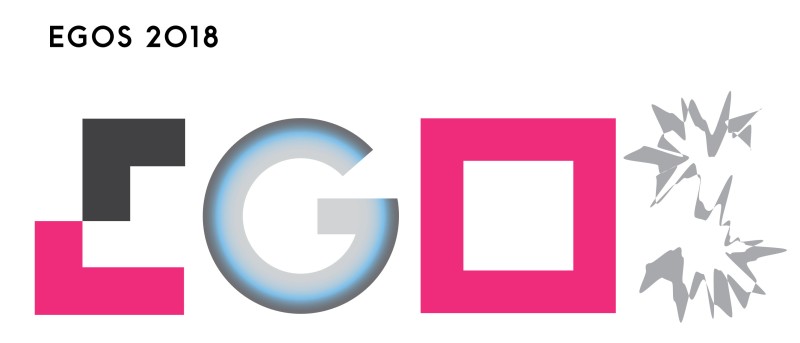Sub-theme 30: Exploring Bodies, Technologies and Routines in Organizational Processes
Call for Papers
Bodies, technologies and routines have long been conceived as sources of stability, both inside and outside of organisations.
For instance, Bourdieu’s notion of “habitus” (1977) or Latour’s emphasis that “technology is society made durable” (1991)
highlight how social order is incorporated through material arrangements. Likewise, routines are seen to produce enduring
structures in organizational processes (March & Simon, 1958). But the dominant views on the stabilizing features of bodies,
technologies and routines in organizations have recently been challenged. They are increasingly investigated concerning their
capacity for surprise: bodies tire or fall ill, technologies break down or malfunction and routines involve mistakes and misconducts.
Organisational scholars now consider routines as flexible and dynamic (Feldman & Pentland, 2003; Cohen, 2007), science
and technology scholars study the vulnerability of technology (Jackson, 2014; Denis & Pontille, 2015; Hommels et al.,
2014) and both are interested in the contingencies of human bodies (Mol, 2002; Dale & Burrell, 2000). Bodies, technologies
and routines are thus conceived as messy, contradictory and dynamic practices that continuously and unavoidably produce opportunities
for surprise.
We want to take this discussion further by focussing not only on bodies, technologies and routines
as singular sources of surprise, but especially by looking at how their complex interrelations inevitably make them less foreseeable
in organisational contexts and how these contingencies are dealt with in organizational processes. Ambiguity is then on the
flipside of rationalisation, both incorporated in bodies, technologies and routines. This leads us to several questions concerning
the relations between stability and surprise as well as the ways of handling unforeseen circumstances in organizations.
Possible (but not limited) topics we would like to address within the sub-theme are:
- Which theoretical approaches help us to understand heterogeneous and surprising assemblages of bodies, technologies and routines? Especially, in which ways are they sensitive to the emergence of unexpected events in organizations and to the practices of coping with them?
- What are the similarities and differences between bodies, technologies and routines concerning their potential for organizational irritation? Do their interrelation strengthen or mitigate this potential? Do organizational practices differ when dealing with different sources of uncertainty?
- How do bodies, technologies and routines figure in the capacity of organisations to become surprised in the first place?
- Are some organisations more prone to be surprised than others? For instance, are hospitals with their focus on bodies and an abundance of technologies more likely to encounter unforeseen circumstances and do they routinely deal with such contingencies?
- If bodily, technical and routine surprise in organisations is mainly located at the micro-level (as much of the research seems to suggest), how can we elaborate concepts that transcend its fundamental situatedness?
- Finally, which research strategies are fruitful for detecting surprises within the ongoing daily routines? Or put differently: which observational biases and barriers do we have to take into account when focussing on the unexpected?
We welcome theoretical and empirical papers that focus on the interrelation of
bodies, technologies and routines from different perspectives and encourage proposals to engage with the relation between
materiality, repetition, stability and surprise. In addition, we seek to explore the organizational ways of dealing with uncertainty
and surprise that emerge from bodily, technical and routine incorporations.
References
- Bourdieu, P. (1977): Outline of a Theory of Practice. Cambridge: Cambridge University Press.
- Cohen, M.D. (2007): “Reading Dewey. Reflections on the study of routine.” Organization Studies, 28 (5), 773–786.
- Dale, K., & Burrell, G. (2000): “What Shape Are We In? Organization Theory and the Organized Body.” In: J. Hassard, R. Holliday& H. Willmott (eds.): Body and Organization. London: SAGE Publications, 15–30.
- Denis, J., & Pontille, D. (2015): “Material Ordering and the Care of Things.” Science, Technology & Human Values, 40 (3), 338–367.
- Feldman, M.S., & Pentland, B.T. (2003): “Reconceptualizing organizational routines as a source of flexibility and change.” Administrative Science Quarterly, 48 (1), 94–118.
- Hommels, A., Maesman, J., & Bijker, W.E. (eds.) (2014): Vulnerability in Technological Cultures. New Directions in Research and Governance. Cambridge: MIT Press.
- Jackson, S.J. (2014): “Rethinking Repair.” In: T. Gillespie, P.J. Boczkowski & K.A. Foot (eds.): Media Technologies. Essays on Communication, Materiality, and Society. Cambridge: MIT Press, 221–239.
- Latour, B. (1991): “Technology is society made durable.” In: J. Law (ed.): A Sociology of Monsters? Essays on Power, Technology and Domination. London: Routledge, 103–132.
- March, J.G., & Simon, H.A. (1958): Organizations. New York: Wiley.
- Mol, A. (2002): The Multiple Body. Ontology in Medical Practice. Durham: Duke University Press.


